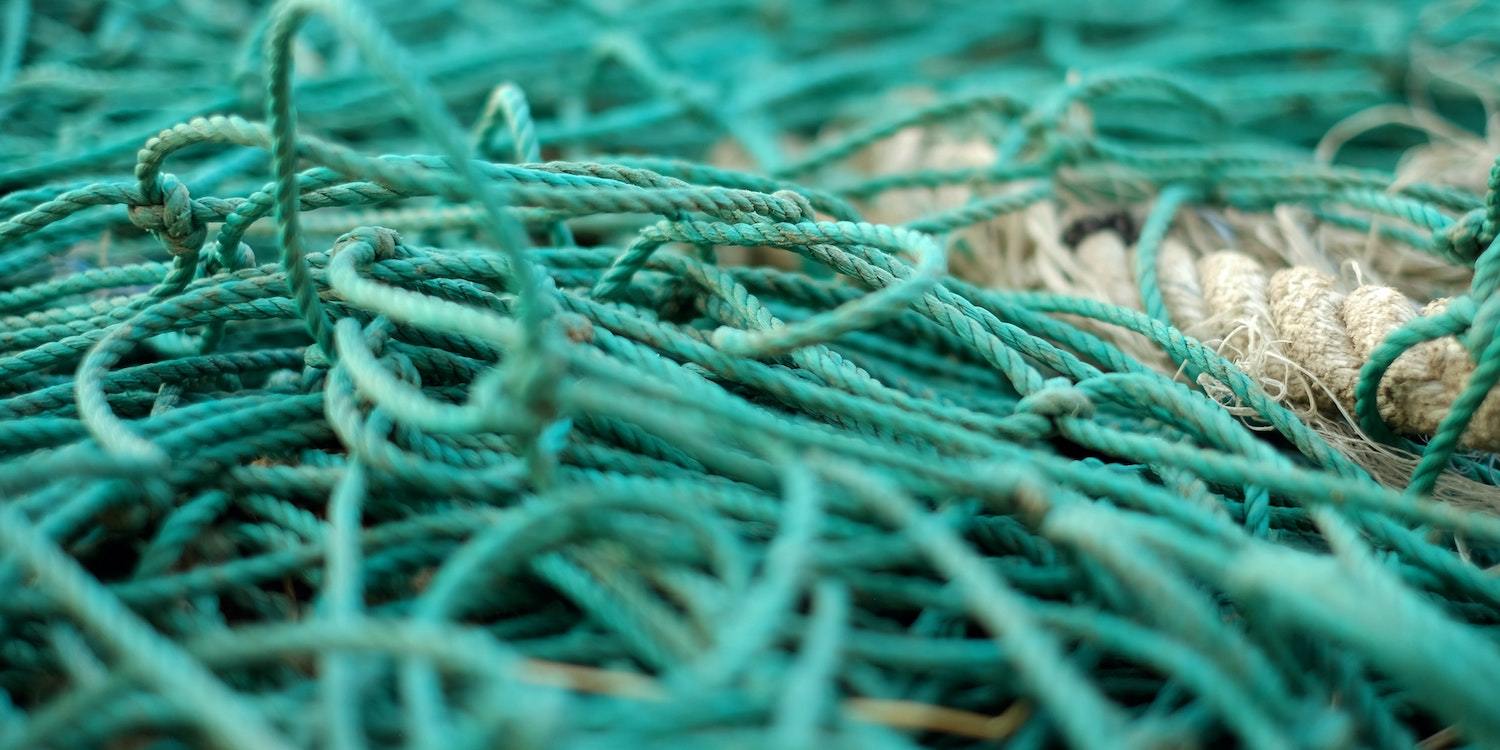The ocean has always connected us humans – to each other, and to places and ideas beyond our reach. Seeing its cobalt surface calms us down, and the soothing sounds of waves make us relax. But for millions of people around the world, the ocean is more than just a view – it’s also a vital source of food and income.
Our planet also relies upon the ocean – covering more than 70% of our green-and-blue planet, it has been dubbed Earth’s own life support. But beneath the serene surface hides a world we rarely see – a world that’s suffering. The whys are many – overfishing, acidification, destruction of marine habitats...
And of course, everyone’s favorite – plastic.
Yeah – at this point, we all know about plastic pollution. More than 12 million tonnes of plastic end up in the ocean each year, and if it continues, plastic is predicted to outweigh the fish in our oceans by 2050.
Yikes.
But despite what you may have heard, not all of it comes from our discarded shopping bags – far from it. In fact, one of the major polluters in our oceans is so-called ghost nets. Already, they make up 46% of the Great Pacific Garbage Patch, and 10% of all plastic in the oceans – and the number continues to grow.
“More than 12 million tonnes of plastic end up in the ocean each year, and if it continues, plastic is predicted to outweigh the fish in our oceans by 2050.”
But what exactly are ghost nets, and more importantly, why have they been dubbed the deadliest kind of ocean debris?
Excellent question – and today, we’re finding out. So, take a deep breath and adjust your goggles. Are you ready? Let’s dive in.
What Are Ghost Nets?
First, let’s cover the basics – ghost nets are simply fishing nets that have been abandoned, disposed of, or lost at sea. Left to drift, they can travel miles upon miles, and since they are mostly made from plastic, it can take 600-800 years for them to decompose naturally. And in that time… they can do a whole lot of damage.
But before we get to that, let’s tackle another burning question – why do fishnets end up in the ocean? After all, fishing is a massive industry, and bringing nets back to shore doesn’t just seem like the most logical thing to do, but the most economic one as well.
Well, you’d think so. But actually, there are many reasons why fishing nets get discarded at sea. A few of the most common ones are:
- Bad Weather – stormy seas can make nets rip far out at sea, or wash away while drying on beaches.
- Gear management – many commercial fisheries don’t clean or repair gear properly. This makes them far more likely to break.
- Fishing techniques – the methods used can sometimes make nets break more easily. Bottom trawling, for example (when nets are dragged along the seafloor), makes nets snag on corals and rock. Catch overload also puts a massive strain on fishing nets, and often causes breakage.
- Illegal fishing (IUU) – hasty escapes from police and coastal guards often mean fishing nets get abandoned, left behind to drift.
- Vandalism – rivaling fishing operations sometimes sabotage each other’s nets, driving through them with boats or destroying them in other ways.
- Access to Recycling Facilities – often, recycling facilities are few and far in between. It can be both easier and cheaper to discard old nets overboard.
- Cost of Retrieval – again, because it’s both costly and time-consuming, many fishers don’t come back for lost nets.
While a few of the reasons above are simply down to circumstances, many come down to profit – catching as much as possible, as quickly and cheaply as possible. Again, fishing is a massive global industry, so it’s probably no surprise that sustainability isn’t the main priority.
But why are ghost nets so bad for the environment?
Environmental Impact: Why Are Ghost Nets a Problem?

One of the biggest problems with ghost nets is something called ghost fishing. This is when fish and other animals, such as dolphins, whales, turtles, seals, and seabirds get tangled up in the drifting nets. In the murky waters, they’re often difficult to see, and many die from either suffocation or drowning. If they manage to break free (which most don’t) they often die from their wounds instead – a slow and painful death.
And this isn’t a small problem, either – in 2018, it was reported that 650 000 animals die from ghost fishing every single year. And because the nets take so long to decompose, they can continue to kill marine life decades after they were sent adrift – making them the deadliest kind of plastic waste in our oceans.
But entanglement isn’t the only danger. Many animals also try to eat the nets, along with fishing hooks and lines. This can create a range of problems, like starvation and life-threatening damage to internal organs.
Yeah – not great.
“In 2018, it was reported that 650 000 animals die from ghost fishing every single year."
But ghost nets don’t just pose a threat to individual animals. No – they can actually affect the health of entire marine environments. How, you wonder?
Well, when nets sink down to the seafloor, they sometimes settle over coral reefs. As you may know, corals are one of the most diverse ecosystems on the planet, and by providing habitats to thousands of micro-organisms and breeding grounds for many fish species, they are vital to a healthy marine environment.
When fishing nets settle over corals, they not only snag and cause them to break – they block out the sunlight corals need to survive and smother them.
On top of this, when the ghost nets travel the oceans, micro-organisms latch onto them, catching a free ride to distant destinations. When new and sometimes invasive bacteria come into an ecosystem, they can threaten its entire balance by wiping out key species.
As you can tell, none of this is good for our oceans. But, the good news is, all is not lost – let’s take a look at some of the things being done, shall we?
What Can We Do to Prevent Ghost Nets?
There are many people working to stop ghost nets from ending up in our precious oceans. For one, scientists are looking at developing fishing nets that are biodegradable, and would naturally dissolve much quicker – hopefully within a few months of drifting off. Others are trying to create trackable nets, that would be much easier to find and retrieve.
But it’ll likely be a while until these nets are used widely. In the meantime, the two main things we can do to help, are preventing nets from ending up in the oceans in the first place, and doubling our efforts to get rid of those already there.
So, how do we do that?
1. Spread Awareness
The truth is, there are already many laws forbidding people from dumping old nets in the ocean. Problem is, they are rarely enforced by governments – and because not enough people know about these problems, they can get away with it.
Spreading awareness about what ghost nets do to our ocean-dwelling friends can help put pressure on governments to take real action – like enforcing laws and collecting more statistics. This alone could make a huge difference.
But it can also help educate people working in the industry about why it’s so important to take care of the old nets. The more resources and statistics available, the less misinformation – and the more pressure on big corporations to do right by our oceans.
2. Support Good Initiatives
There’s a ton of organizations out there doing great work to rid the oceans of ghost nets, and to help animals that have fallen prey to ghost fishing.
Many of them are non-profits, that rely on support from governments and individuals to keep operating. Spreading awareness around them and supporting them in the ways you’re able to is a great way to help them do what they do best.
One resource to check out is Global Ghost Gear Initiative (GGGI) – the largest global alliance to protect the oceans from ghost gear. With support from companies, organizations, and governments across the planet, they have some great resources to learn more from, as well as ongoing projects to locate and retrieve lost nets and set better standards in the fishing industry.
Another organization that’s working to prevent ghost fishing is WWF – among other things, they’ve recently come out with a Ghost Gear Report that’s helping to put pressure on governments and leaders in the fishing industry.
If you’re wanting to help our marine friends, a few organizations that nurse animals back to health are the Oliver Ridley Project, which works with injured sea turtles, the Marine Animal Rescue, which works all along the Californian coast, and the Marine Mammals of Maine, which help injured seals and other mammals along the coast of (surprise!) Maine.
3. Buy Recycled
And, last but not least – recycling facilities for fishing gear are often few and far in between, but the more we recycle lost and retrieved fishing nets, the more money, and effort gets put into the recycling process.
In short? You guessed it – vote with your dollar. By buying products that use recycled fishing nets (when appropriate, of course) you’re helping the fishing industry move in the right direction, and supporting all the initiatives out there that are pushing for net retrieval and more recycling.
The list of companies that make use of recycled fishing nets these days is long – which is great news! One big player is Econyl, a company creating new material from retrieved nets and plastic destined for the landfills – if you see their logo, it’s a good sign!
Another company to keep an eye on is Bureo with their material NetPlus – it’s made entirely from recycled fishing nets. Among other things, they work with companies like Patagonia to help improve their sustainability practices, but you can also find their Ocean Jenga and Fishnet Frisbee here in our shop.
And while we’re on it, if you are looking for a new doormat, or a toy for your furry friend, you can check out those in our shop too – they’re made from 100% recycled lobster rope.
Puh! That was a lot of information – but we hope you learned something new. Did you know about ghost nets and their impact on our oceans? Share your thoughts with us in the comments below!
Psst… Curious to learn more? Check out our post on the Great Pacific Garbage Patch next!






